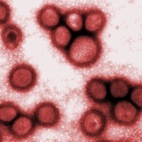Newsletter: Volume 6, Issue 1 April, 2002
I have been receiving questions regarding the new injectable heartworm preventative from Fort Dodge called ProHeart6®. This is a formulation ofmoxidectin and one injection provides 6 months of heartworm prevention. It’s a relatively new product and I have not heard much about problems associated with the injection other than occasional pain and/or inflammation at the injection site. The product is also effective for treatment of hookworms. It is used in dogs 6 months of age or older. We are not currently stocking the product at this time and probably won’t for another year or so. One of the major problems...





